-
 Bitcoin
Bitcoin $117700
-1.00% -
 Ethereum
Ethereum $4458
-3.91% -
 XRP
XRP $3.119
0.14% -
 Tether USDt
Tether USDt $1.001
-0.02% -
 BNB
BNB $836.6
-1.56% -
 Solana
Solana $189.5
-3.90% -
 USDC
USDC $0.9998
-0.02% -
 Dogecoin
Dogecoin $0.2335
1.29% -
 Cardano
Cardano $0.9642
1.51% -
 TRON
TRON $0.3539
-1.19% -
 Hyperliquid
Hyperliquid $47.41
-1.84% -
 Chainlink
Chainlink $21.92
-3.28% -
 Stellar
Stellar $0.4286
-0.23% -
 Sui
Sui $3.724
-3.29% -
 Bitcoin Cash
Bitcoin Cash $594.8
-0.78% -
 Ethena USDe
Ethena USDe $1.001
0.04% -
 Hedera
Hedera $0.2501
-2.06% -
 Avalanche
Avalanche $23.96
-4.87% -
 Litecoin
Litecoin $119.0
-2.32% -
 Toncoin
Toncoin $3.473
0.82% -
 UNUS SED LEO
UNUS SED LEO $9.596
0.17% -
 Shiba Inu
Shiba Inu $0.00001301
-0.39% -
 Uniswap
Uniswap $11.03
-0.25% -
 Polkadot
Polkadot $3.935
-2.62% -
 Dai
Dai $1.000
0.01% -
 Bitget Token
Bitget Token $4.564
-1.76% -
 Cronos
Cronos $0.1512
-4.11% -
 Ethena
Ethena $0.7306
-1.09% -
 Pepe
Pepe $0.00001087
-2.68% -
 Aave
Aave $300.2
-4.00%
Are NFT coins worth investing in?
Investing in NFTs necessitates considering factors like underlying asset value, market demand, creator reputation, and long-term growth potential to assess potential risks and rewards.
Jan 12, 2025 at 10:32 am
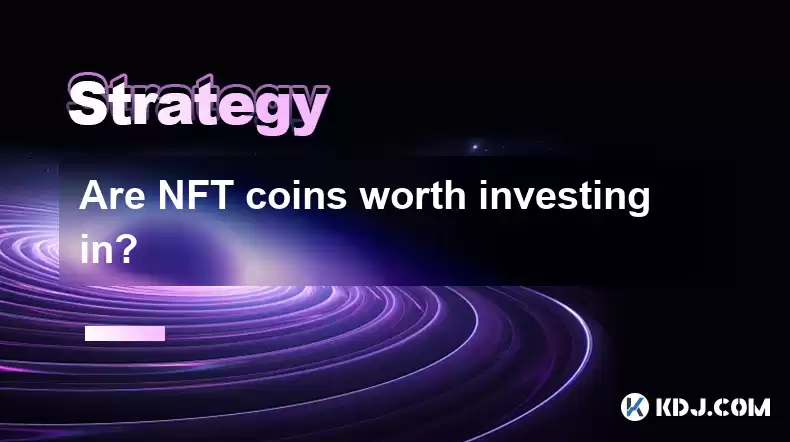
Key Points
- Understanding NFTs and their Value Proposition
- Factors to Consider When Evaluating NFT Investment Opportunities
- NFT Investment Strategies: Assessing Risk and Return
- Blockchain Technology and its Impact on NFT Value
- Top Alternative NFT Platforms to FTX
Are NFT Coins Worth Investing In?
Non-Fungible Tokens (NFTs) have emerged as a novel asset class in the cryptocurrency space, attracting attention for their ability to represent unique digital assets on a blockchain. However, the question of whether NFT coins are a sound investment remains a subject of debate. This article delves into the intricacies of NFT investment, providing investors with a comprehensive understanding to make informed decisions.
Understanding NFTs and their Value Proposition
NFTs are digital assets stored on a blockchain, uniquely identifying and differentiating them from other tokens or cryptocurrencies. They offer several advantages that have contributed to their popularity:
- Immutability: NFTs are tamper-proof, ensuring that ownership records are secure and cannot be altered.
- Scarcity: Each NFT represents a unique entity, creating a sense of exclusivity and rarity.
- Provenance: The blockchain provides an unalterable record of NFT ownership history, enhancing authenticity and trust.
- Interoperability: Many NFTs can be traded and exchanged across multiple marketplaces, increasing liquidity.
Moreover, NFTs can represent various digital assets, including art, collectibles, music, videos, and in-game items. This diversity expands the potential applications and investment opportunities in the NFT market.
Factors to Consider When Evaluating NFT Investment Opportunities
Investing in NFTs requires careful evaluation to assess potential risks and rewards. Consider the following factors when making investment decisions:
- Underlying Asset Value: The intrinsic value of the underlying digital asset is crucial. NFTs representing iconic artworks or rare collectibles hold higher intrinsic value than generic digital items.
- Market Demand: High demand for a particular NFT or type of asset increases its value potential. Monitor the hype, community engagement, and trading activity around different NFT projects.
- Creator Reputation: The reputation of the NFT creator or celebrity endorsement can influence its value. NFTs with proven track records or by renowned artists typically command higher prices.
- Community Support: Strong community engagement and support can boost NFT value over time. Look for projects with active online communities, forums, and social media presence.
- Long-Term Growth Potential: NFTs with unique value propositions or utility may have greater long-term growth potential. Consider NFTs that offer access to exclusive content, experiences, or future revenue streams.
NFT Investment Strategies: Assessing Risk and Return
NFT investment involves varying levels of risk, depending on factors such as volatility and market conditions. Here are some potential investment strategies:
- Short-Term Trading: Buying and selling NFTs quickly to capitalize on fluctuations in market price. This strategy requires close monitoring and trading skills.
- Long-Term Holding: Buying and holding NFTs for potential appreciation over extended periods. This approach is suitable for NFTs with a strong underlying asset value and long-term growth potential.
- Diversification: Investing in a diversified portfolio of NFTs across different categories and creators to minimize risk and maximize return potential.
- Utility-Driven NFTs: NFTs that offer utility or access to exclusive experiences can provide additional value and potential return.
- Fractionalized Ownership: Investing in fractionalized NFTs allows ownership of portions of valuable assets, reducing the initial investment cost and spreading the risk.
Blockchain Technology and its Impact on NFT Value
The underlying blockchain technology plays a significant role in NFT value. Immutable and secure blockchains provide a foundation for trust, authenticity, and unique ownership. Look for NFTs minted on reputable blockchains with robust consensus mechanisms and smart contract capabilities.
Top Alternative NFT Platforms to FTX
While FTX was once a prominent NFT platform, its recent collapse has left investors exploring alternative options. Here are some notable NFT marketplaces:
- OpenSea: The largest and most comprehensive NFT marketplace, featuring a wide variety of digital collectibles, art, and in-game assets.
- Binance NFT: The NFT marketplace associated with the Binance cryptocurrency exchange, offering a wide selection of NFTs with low transaction fees.
- SuperRare: A premium NFT marketplace showcasing unique digital artworks from renowned artists.
- Rarible: An artist-centric NFT marketplace that prioritizes creators and offers flexible NFT minting tools.
- Foundation: A curated NFT marketplace specializing in high-quality digital art and collectibles.
FAQs
- What is the difference between NFTs and cryptocurrencies?
NFTs represent unique digital assets on a blockchain, while cryptocurrencies are fungible tokens used for transactions and store of value. - How do I buy NFTs?
NFTs can be purchased on NFT marketplaces using cryptocurrencies such as Ethereum or Polygon. - What is the average return on NFT investments?
NFT returns can vary significantly depending on factors like asset value, market demand, and investment strategy. Long-term holding typically yields higher average returns compared to short-term trading. - Are NFTs a good investment for beginners?
NFTs can be a risky investment, especially for beginners. Thorough research and understanding of the NFT market and individual NFT projects are recommended before investing. - How can I avoid scams and fraud when investing in NFTs?
Conduct proper due diligence on NFT projects, verify creators' authenticity, and always buy NFTs from reputable platforms with clear ownership records.
Disclaimer:info@kdj.com
The information provided is not trading advice. kdj.com does not assume any responsibility for any investments made based on the information provided in this article. Cryptocurrencies are highly volatile and it is highly recommended that you invest with caution after thorough research!
If you believe that the content used on this website infringes your copyright, please contact us immediately (info@kdj.com) and we will delete it promptly.
- Kazakhstan's Crypto Leap: Bitcoin ETF and Central Asia's Digital Finance Future
- 2025-08-13 12:45:19
- BlockDAG Presale Blazes Past $371M: Fundraising Frenzy Fuels Crypto Sensation
- 2025-08-13 13:05:21
- Meme Coins: Chasing the 2025 Surge – Which Will Moonshot?
- 2025-08-13 10:25:23
- Bitcoin's Wild Ride: Rally, Pullback, and What's Next
- 2025-08-13 10:25:23
- Bitcoin, Bitmax, and Institutional Demand: A New Era of Crypto Investment
- 2025-08-13 10:45:12
- Solana, ROAM, and Airdrops: What's the Buzz in 2025?
- 2025-08-13 11:35:13
Related knowledge
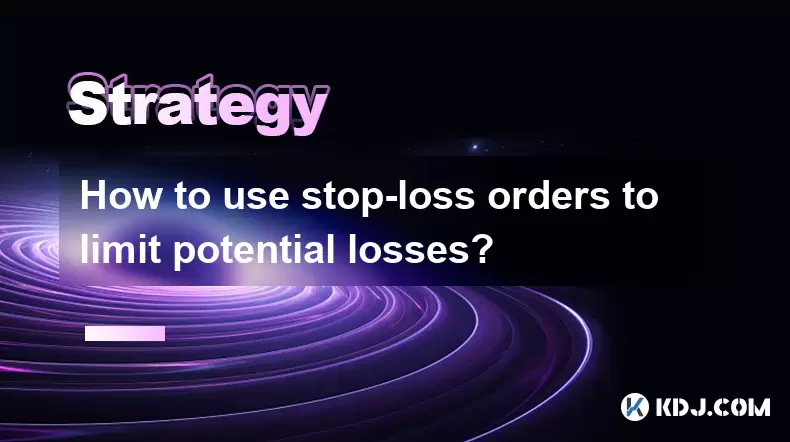
How to use stop-loss orders to limit potential losses?
Aug 08,2025 at 02:01pm
Understanding Stop-Loss Orders in Cryptocurrency TradingA stop-loss order is a risk management tool used by traders to automatically sell a cryptocurr...
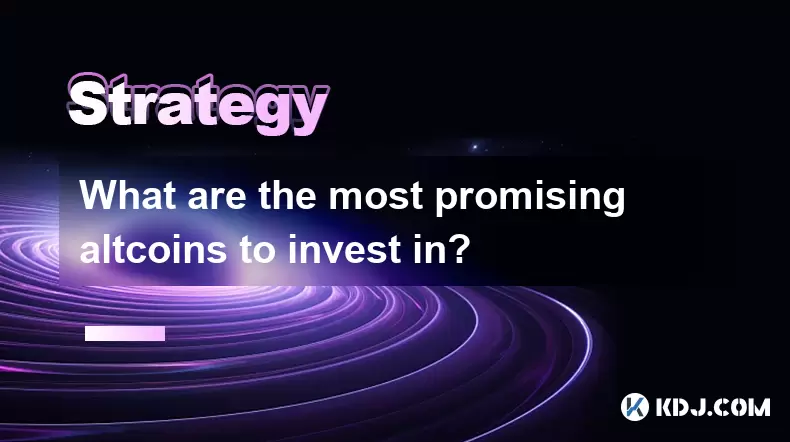
What are the most promising altcoins to invest in?
Aug 10,2025 at 11:42am
Understanding the Role of Private Keys in Cryptocurrency WalletsIn the world of cryptocurrency, private keys are the cornerstone of ownership and cont...

Should I invest in Bitcoin or altcoins?
Aug 13,2025 at 11:35am
Understanding Bitcoin and AltcoinsWhen deciding whether to invest in Bitcoin or altcoins, it's essential to first understand what each represents. Bit...

What are the most important metrics to look at when evaluating a cryptocurrency?
Aug 13,2025 at 11:36am
Market Capitalization: Understanding the Total ValueWhen evaluating a cryptocurrency, market capitalization is one of the most foundational metrics. T...
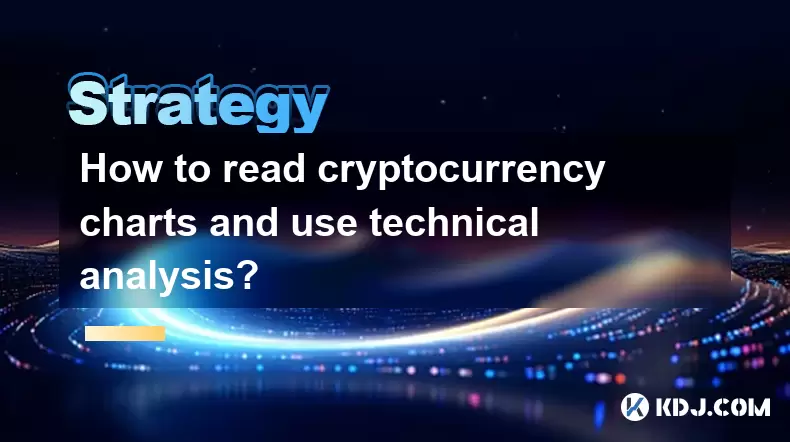
How to read cryptocurrency charts and use technical analysis?
Aug 08,2025 at 11:08am
Understanding the Basics of Cryptocurrency ChartsCryptocurrency charts are graphical representations of price movements over time. These charts are es...
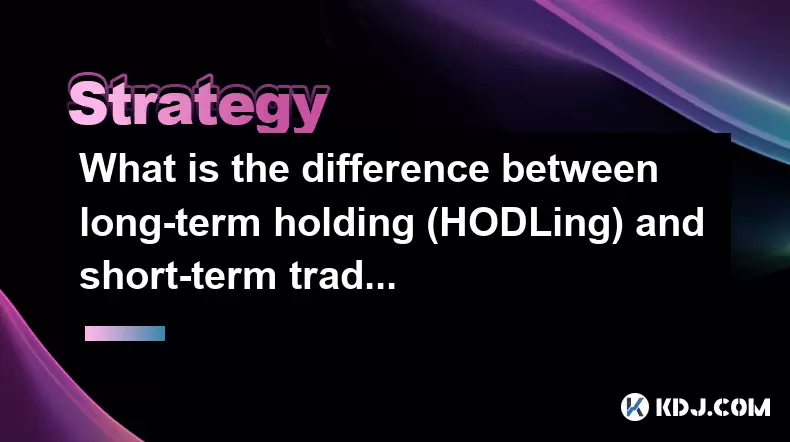
What is the difference between long-term holding (HODLing) and short-term trading?
Aug 10,2025 at 05:30pm
Understanding HODLing in the Cryptocurrency SpaceThe term HODL originated from a typo in a 2013 Bitcoin forum post and has since become a widely accep...

How to use stop-loss orders to limit potential losses?
Aug 08,2025 at 02:01pm
Understanding Stop-Loss Orders in Cryptocurrency TradingA stop-loss order is a risk management tool used by traders to automatically sell a cryptocurr...

What are the most promising altcoins to invest in?
Aug 10,2025 at 11:42am
Understanding the Role of Private Keys in Cryptocurrency WalletsIn the world of cryptocurrency, private keys are the cornerstone of ownership and cont...

Should I invest in Bitcoin or altcoins?
Aug 13,2025 at 11:35am
Understanding Bitcoin and AltcoinsWhen deciding whether to invest in Bitcoin or altcoins, it's essential to first understand what each represents. Bit...

What are the most important metrics to look at when evaluating a cryptocurrency?
Aug 13,2025 at 11:36am
Market Capitalization: Understanding the Total ValueWhen evaluating a cryptocurrency, market capitalization is one of the most foundational metrics. T...

How to read cryptocurrency charts and use technical analysis?
Aug 08,2025 at 11:08am
Understanding the Basics of Cryptocurrency ChartsCryptocurrency charts are graphical representations of price movements over time. These charts are es...

What is the difference between long-term holding (HODLing) and short-term trading?
Aug 10,2025 at 05:30pm
Understanding HODLing in the Cryptocurrency SpaceThe term HODL originated from a typo in a 2013 Bitcoin forum post and has since become a widely accep...
See all articles

























































































